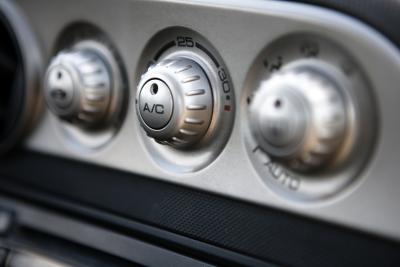
Section 609 of the Clean Air Act of 1990, and subsequent amendments to this law, requires the refrigerant in automotive air conditioning systems to be recovered by a technician certified in refrigerant handling. Venting any type of automotive refrigerant into the atmosphere is prohibited. Removal and recovery of automotive refrigerant, before repairing the system, require a specialized recovery machine. Modern machines can recover refrigerant, recycle it, and then evacuate and recharge the air conditioning system after repairs are completed.
Attach the machine's service hoses to the vehicle's air conditioning system service ports. Find the low-pressure service port by following the hose and line assembly that runs from the back of the compressor to the cylinder-shaped accumulator located near the firewall. On the back of the compressor, the low-pressure line is the larger of the two lines. The high-pressure service port is located on the high-pressure line between the condenser and the firewall. The condenser is located in front of the radiator. The high-pressure line is substantially smaller in diameter when compared to the low-pressure line.
Start the machine. As the machine runs, it removes all of the refrigerant vapor and non-condensable gases in the system. Some of the refrigerant will be in liquid form, so the machine will drop the pressure in the system to about 10 in/hg of vacuum. This causes the refrigerant to turn to vapor and leave the system. When the machine has the system under vacuum, it will automatically shut off and monitor the pressure in the system. If the pressure rises, the machine will restart and continue to pull vacuum. If the pressure in the system remains under vacuum for five to 10 minutes, depending on the manufacturer of the machine, the process is complete.
Disconnect the machine by closing the valves on the service hoses and removing them from the service ports on the vehicle. Early machines designed to handle R-12 (Freon) refrigerant are required to have shut off valves on the hose. Machines designed to handle R-134a refrigerant have a quick disconnect fitting on the hose end that prevents refrigerant loss.